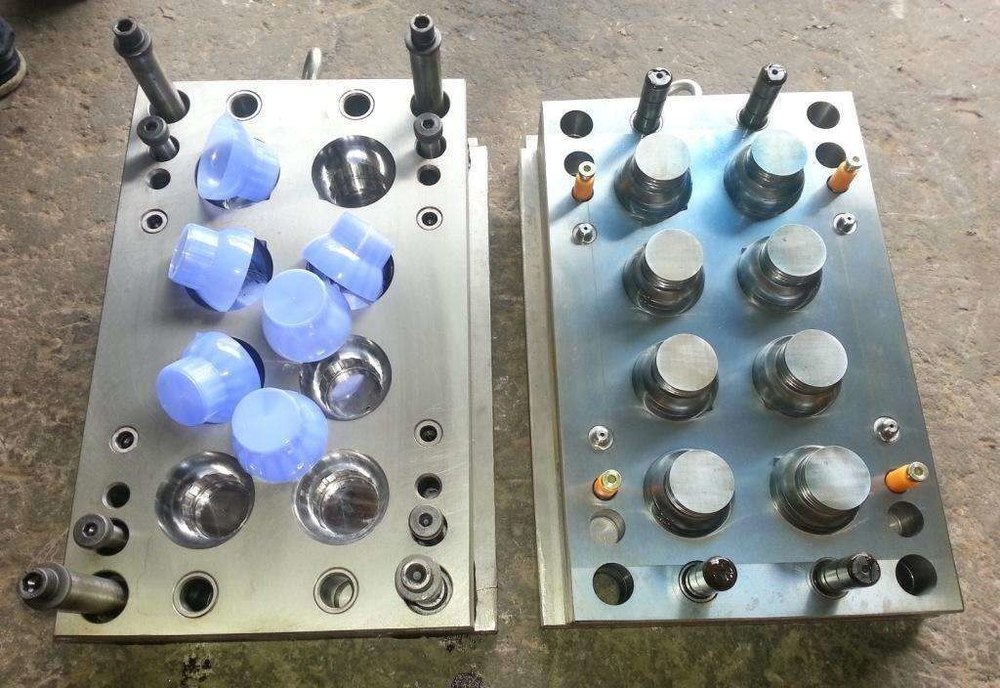
Plastic bottle cap mold High Quality Injection Molding Solutions
Introduction to Plastic Bottle Cap Molds
Plastic bottle cap molds are specialized tools used in the mass production of plastic closures for bottles across various industries, including beverages, pharmaceuticals, cosmetics, and household chemicals. These precision-engineered molds determine the final product's quality, functionality, and appearance, making them critical components in packaging manufacturing.
The bottle cap mold industry has evolved significantly with advancements in plastic injection molding technology, material science, and design capabilities. Today's manufacturers can produce molds for an extensive range of cap types, from simple screw caps to complex child-resistant or tamper-evident closures.
Types of Plastic Bottle Cap Molds
1. Single-Cavity vs. Multi-Cavity Molds
Single-cavity molds produce one cap per cycle, ideal for low-volume production or prototype development
Multi-cavity molds (ranging from 2 to 144 cavities) dramatically increase production efficiency for high-volume needs
2. Hot Runner vs. Cold Runner Systems
Hot runner molds maintain molten plastic in heated manifolds, reducing waste and cycle times
Cold runner molds use traditional sprue and runner systems, more economical for smaller production runs
3. Specialty Cap Molds
Sports cap molds (flip-top, push-pull closures)
Dispensing cap molds (for lotions, sauces, or powders)
Child-resistant closure (CRC) molds
Tamper-evident cap molds
Trigger sprayer cap molds
Key Manufacturing Processes
1. Design and Engineering
3D CAD modeling of cap and mold components
Flow analysis to optimize plastic injection
Structural analysis for mold durability
Prototyping with 3D printing or soft tooling
2. Precision Machining
CNC milling of mold bases and cavities
EDM (Electrical Discharge Machining) for complex geometries
High-speed machining for fine details
Precision grinding for critical surfaces
3. Surface Treatment
Polishing to achieve desired surface finishes
Texture application for grip or aesthetic purposes
Hard coating (chrome plating, nitriding) for extended mold life
Anti-corrosion treatments
4. Assembly and Testing
Component fitting and alignment
Trial runs with production-grade materials
Quality inspection of sample caps
Adjustment and fine-tuning
Material Considerations for Cap Molds
1. Mold Base Materials
P20 steel: Economical for moderate production runs
H13 tool steel: Excellent for high-volume production
Stainless steel: For corrosive environments or medical applications
Beryllium copper: Superior heat dissipation
2. Plastic Materials for Caps
Polyethylene (HDPE, LDPE): Most common for standard caps
Polypropylene (PP): For higher temperature resistance
PET: For specific compatibility requirements
Specialty compounds: With additives for UV protection, antimicrobial properties, etc.
Quality Control in Mold Manufacturing
Dimensional Accuracy Verification
CMM (Coordinate Measuring Machine) inspection
Optical comparators for profile verification
Go/no-go gauges for critical dimensions
Performance Testing
Cycle time measurement
Ejection force analysis
Wear resistance evaluation
Production Sample Evaluation
Cap functionality testing
Leakage tests
Torque requirements verification
Visual inspection for defects
Maintenance and Longevity of Bottle Cap Molds
Proper maintenance significantly extends mold life and maintains product quality:
Regular Cleaning Procedures
Residue removal after production runs
Corrosion prevention measures
Lubrication of moving components
Preventive Maintenance
Wear inspection of critical components
Alignment checks
Surface condition monitoring
Repair and Refurbishment
Weld repair of damaged areas
Re-machining of critical surfaces
Component replacement strategies
Industry Trends and Innovations
Smart Cap Technology Integration
Molds capable of producing caps with RFID or NFC functionality
Integration with IoT devices
Sustainable Solutions
Molds for recycled plastic materials
Designs minimizing material usage
Biodegradable plastic cap molds
Advanced Manufacturing Techniques
Additive manufacturing for conformal cooling channels
AI-assisted mold flow optimization
Industry 4.0 integration for predictive maintenance
Customization Capabilities
Quick-change insert systems
Modular mold designs
Rapid prototyping services
Choosing a Bottle Cap Mold Manufacturer
When selecting a mold manufacturer, consider:
Experience and Specialization
Industry-specific expertise
Portfolio of similar projects
Technical capabilities
Quality Certifications
ISO 9001 certification
Industry-specific standards compliance
Quality control processes
Production Capacity
Ability to handle your volume requirements
Lead time commitments
Scalability options
After-Sales Support
Maintenance services
Technical assistance
Spare parts availability
Conclusion
Plastic bottle cap mold manufacturing is a sophisticated process that combines precision engineering with material science and production expertise. As packaging requirements become more demanding and sustainability concerns grow, mold manufacturers continue to innovate, offering solutions that meet both functional and environmental objectives.
Investing in high-quality bottle cap molds from experienced manufacturers ensures consistent product quality, production efficiency, and long-term cost savings. By understanding the various types of molds, manufacturing processes, and maintenance requirements, businesses can make informed decisions about their packaging needs.

